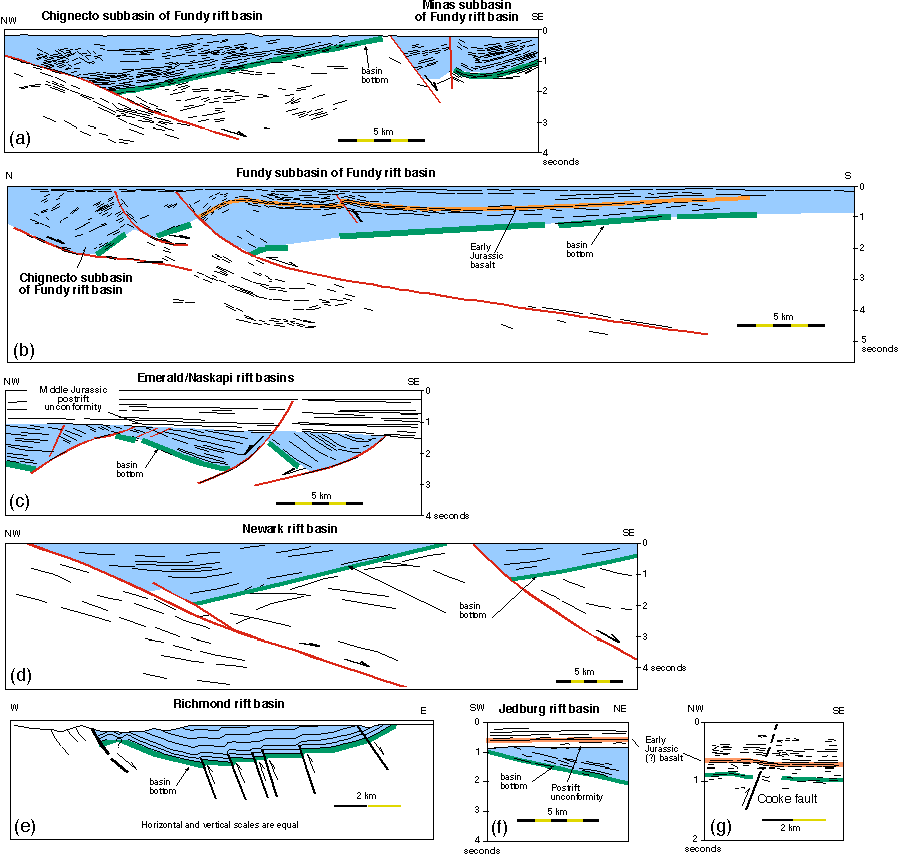| Figure 3: Sections through rift basins of eastern North America. Thick green lines mark contact between synrift strata of early Mesozoic age (blue) and prerift rocks of Precambrian-Paleozoic age (unshaded). Thick red lines are fault surfaces. Arrows show Mesozoic movements. Vertical axes on seismic lines are in two-way travel time. Section locations are shown in Figure 1. (a) Line drawing of time-migrated seismic line 82-29 through the Chignecto and Minas subbasins of the Fundy rift basin of New Brunswick and Nova Scotia; see Fig. 4 for location (after Withjack et al., 1995). Note inversion-related syncline in Minas subbasin. (b) Line drawing of northern segment of time-migrated seismic line 81-47 through the Fundy rift basin of New Brunswick and Nova Scotia; see Fig. 4 for location (after Withjack et al., 1995). Orange line represents reflection from Lower Jurassic North Mountain Basalt. Note reverse faults and anticlines related to inversion. (c) Line drawing of segment of seismic line 3630-1/2-85 through the Emerald/Naskapi rift basin of offshore Nova Scotia (Tankard and Welsink, 1989). Note inversion-related syncline adjacent to eastern border fault. Inversion-related deformation pre-dates the Middle Jurassic unconformity. (d) Line drawing of seismic line NB-1 through the Newark rift basin (reinterpreted from Costain and Coruh, 1989). (e) Cross section through the Richmond basin of Virginia (after Shaler and Woodworth, 1899). Note reverse faults and fault-propagation folds related to inversion. (f) Line drawing of seismic line VT-5 through the Jedburg rift basin of South Carolina (Costain and Coruh, 1989). The Early Jurassic(?)-age basalt is a postrift unit. (g) Line drawing of segment of seismic line SC10 from onshore South Carolina (Hamilton et al., 1983). The Cooke fault was active as a reverse fault at the time of emplacement of the basalt because the footwall sequence is thicker than the hanging-wall sequence. [Modified from Withjack et al., 1998.] |
 |